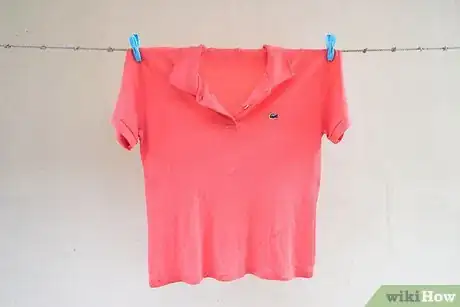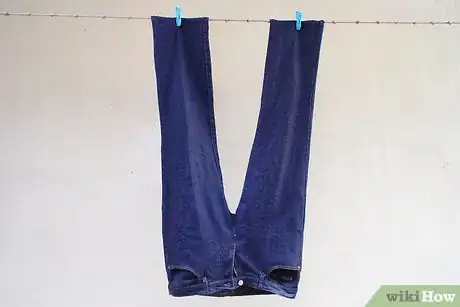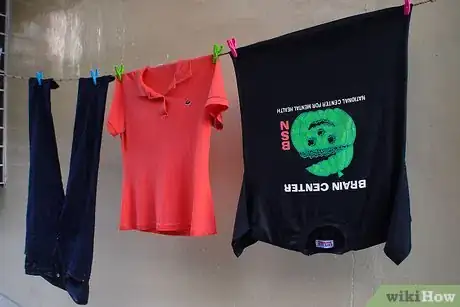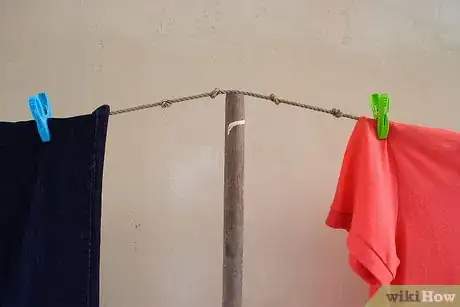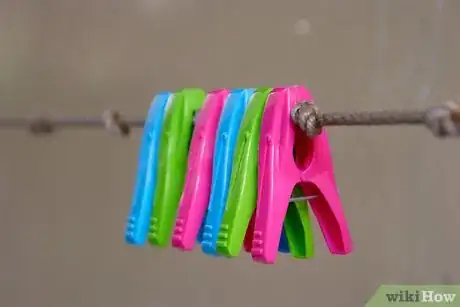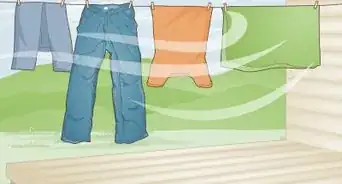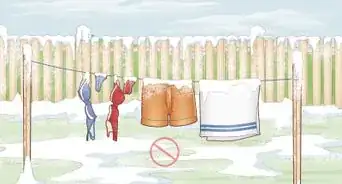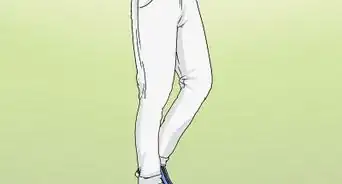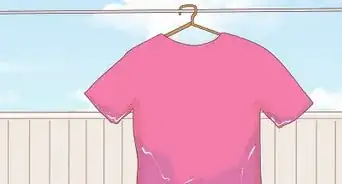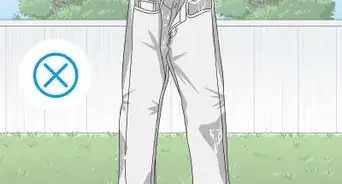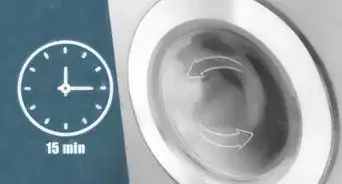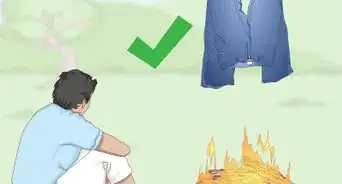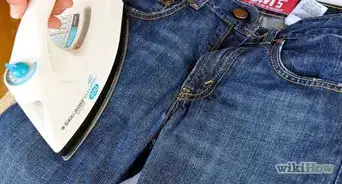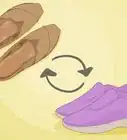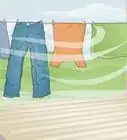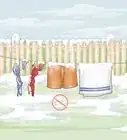wikiHow is a “wiki,” similar to Wikipedia, which means that many of our articles are co-written by multiple authors. To create this article, 16 people, some anonymous, worked to edit and improve it over time.
This article has been viewed 74,888 times.
Learn more...
Before dryers became popular, people used to hang their clothes from clotheslines to dry. Today, many are returning to this practice, especially since using a clothesline can cut residential energy costs by 5%.[1] Such household skills are often passed down from parent to child. But, what happens when a skill is lost and your parents don't know how to use a clothesline? Then people turn to search engines or the media. However, most articles about clotheslines show shirts being hung right side up from the shoulders[2] which will give you funny-looking peaks at your shoulders when you wear them. Is that really what you want? This article will show you the nitty gritty of air drying your clothes on a clothesline.
Steps
-
1Hang your t-shirts up-side down so that the clip marks are in a less noticeable location. You wouldn't want to have to iron your shirts to get those marks out. Irons draw a huge amount of wattage, negating some of your energy savings from using the clothesline in the first place. Alternatively, hang your t-shirts at the seams so that they hang straight (assuming the shirt has seams, and those seams are straight).
-
2Hang cotton or blend cut-&-sewn shirts (those with cuffs and collars) upright with the clothespins at the side seams. This allows them to dry quickly without shoulder marks or wrinkles.
- Alternatively, a you could hang shirts and t-shirts out on the line on a coathanger. This means no pegs and no marks and minimal ironing.
- Or you could try hanging T shirts at the armpits; peg marks won't be seen here.
Advertisement -
3Smooth out your clothes while you hang them up to minimize ironing. If your clothes come out of the washer very wrinkly, lower the spin cycle; they might take a little longer to dry, but they'll dry smoother. Just don't "snap" (sharply shake) the clothes right before hanging them, as this can break the threads in them over time.[3] Some people even put the clothes in a dryer for a just a few minutes before hanging them to air dry.
-
4Fold the top of your towels and sheets over the line slightly. That will make them more secure and less likely to blow off the line. Use more than 2 clothespins for heavy items.
-
5Hang pants from the cuffs. The weight of the upper part of the pants will help smooth it out while drying, lessening the need for an iron.[3]
-
6Hang your clothes in the shade. Sun fades dyes. Our grandmothers knew to hang their clothes in a covered or partly covered area so that their clothes did not fade. It also gave them more time to get the clothes inside in case it started to rain.
- If you don't have shade for a clothesline, you can turn your clothes inside out and that will greatly reduce the fading.
-
7Keep an eye on pollen count. If someone in your household is allergic to pollen that is flying at the time, hang your clothes inside or use your dryer.
-
8Wipe down your clothesline before each use. Pollution, pollen and dust cling to them.
-
9Use a prop to support your clothes line midway when you load it with heavy washing. This reduces the stresses in your clothes line so it will not snap and makes for less pull out force at the end brackets.
-
10Use sturdy clothespins. This image shows three types of clothespins. The one on the left, with the pom poms glued to it, is the style you will find most frequently in the stores. They are made in China and extremely cheap. The other two are made in the American Midwest and harder to find. They cost twice as much as the ones from China. The one shown on the extreme right has been in use since 1990. The one in the middle has been used for two years.Compare the gauge of the metal used in the spring that holds the clip together. The cheap imported ones are better used for art projects (hence the pom poms). Entrust your wet and heavy laundry to the cheap clothespins and you may learn the hard way that they are not trustworthy. Your local Home Depot probably only stocks the cheap ones that you don't want to use. Go to your independent hardware store and ask if they will special order the sturdier ones for you. It takes a few days, but it is worth the wait. Maybe if enough people insist on the better ones, the default item stocked in stores will be the sturdy ones.
-
11Alternatively, springless clothes pegs made of hardwood or plastic also hold laundry securely.[[Image:Use a Clothesline Step 11.jpg}}
Warnings
- Watch out for the neighborhood clothesline police. Many homeowners associations and apartment complexes ban or severely restrict the use of clotheslines. Check the current laws in your area. For example, after the California electricity crisis of summers of 1999 and 2000, the state legislature passed a law preventing homeowners associations from punishing clothesline users. That being said, it helps to consider aesthetics and placement when you hang your clothes outside. Don't make your neighbor fight their way through damp sheets or come face-to-face with anyone's bras and underwear.[4]
⧼thumbs_response⧽
References
- ↑ http://planetgreen.discovery.com/home-garden/laundrylist-project-clothesline.html
- ↑ http://www.nytimes.com/2007/04/12/garden/12clothesline.html?_r=1J
- ↑ 3.03.1http://ths.gardenweb.com/forums/load/cleaning/msg0218053930819.html
- ↑ http://www.latimes.com/features/home/la-hm-clothesline7-2009feb07,0,5628220.story
- https://badmomgoodmom.blogspot.com/2007/04/how-to-use-clothesline.html - Original source, shared with permission.

